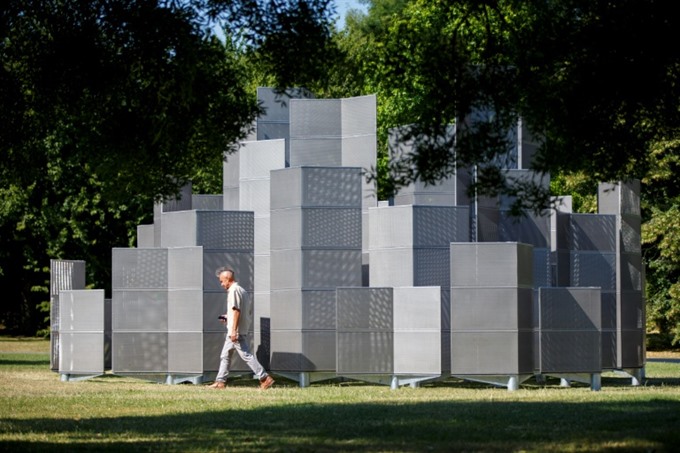 Life & Style
Life & Style

Visitors to London's Regents Park this summer will be met with the unusual sight of a giant penguin and a dancing hare as part of an annual sculpture fair.
 |
| People walk around a sculpture entitled "Optic Labyrinth" by British artist Conrad Shawcross in Regents Park London as part of the Frieze Sculpture exhibition. — AFP Photo |
LONDON — Visitors to London’s Regents Park this summer will be met with the unusual sight of a giant penguin and a dancing hare as part of an annual sculpture fair.
For the second year, Frieze Sculpture will take over the famous park’s English Gardens for three months, showcasing the work of 25 international artists, free of charge.
Curator Clare Lilley, from the Yorkshire Sculpture Park, said the event would allow the public to experience "a snapshot of the fantastic imagination of artists and variety of sculpture being made today".
The "celebration of sculpture", which opens on Wednesday, brings together a diverse roster of artists, including South Korea’s Kimsooja, India’s Bharti Kher and Britain’s Larry Achiompang.
"There is a geographic spread: the artists come from South Africa, South Korea, Scandinavia, Europe and the United States," Lilley said.
"In terms of age too, there is a nice span, since Haroon Gunn-Salie, from South Africa, is 29, whereas John Balderssari, from the United States, is 87.
"Also, there are a lot of female artists this year, that is important for us," she added.
"Optic Labyrinth" by British artist Conrad Shawcross comprises a four-metre high stainless steel installation with holes for visitors to walk through.
"At first, one sees it as minimalist, industrial, austere but when you go around, the sun goes through and it becomes alive, decorative and generous," he explained.
More than five million people visited last year’s inaugural event, which has two sister events —Frieze London, dedicated to contemporary art, and Frieze Masters, specialising in art from the ancient era and Old Masters to the late 20th century. — AFP




